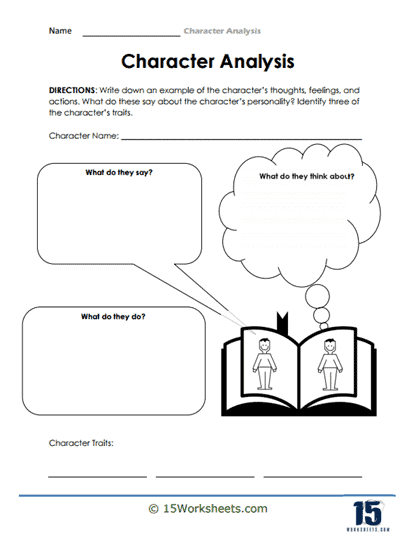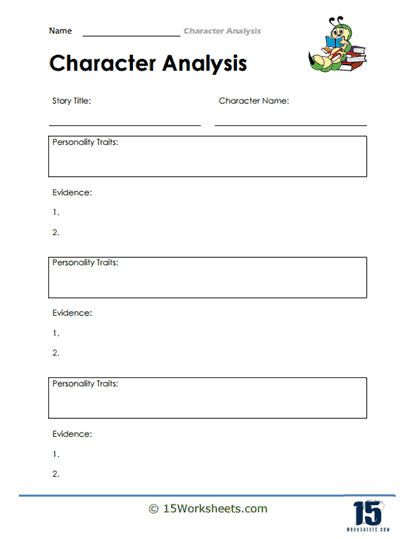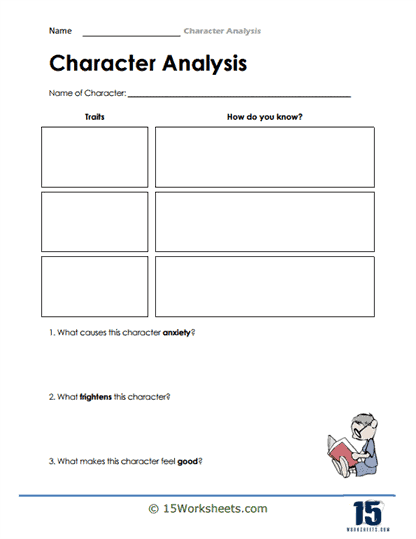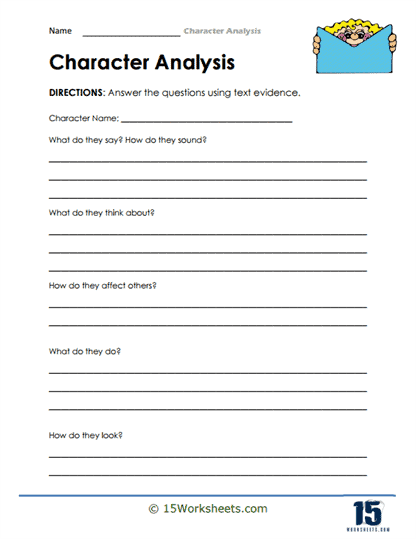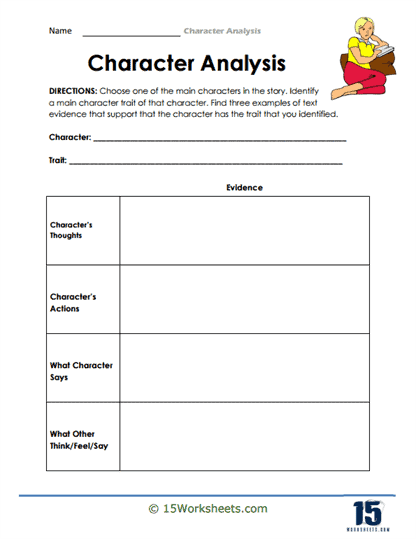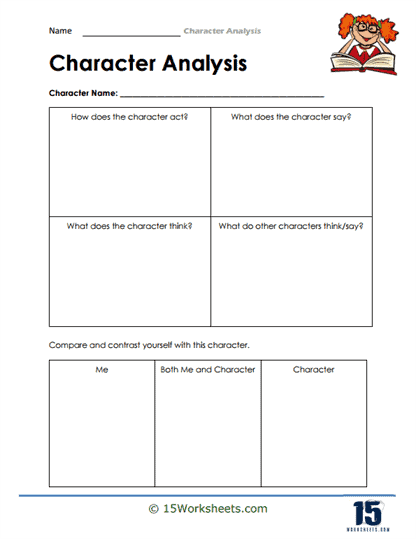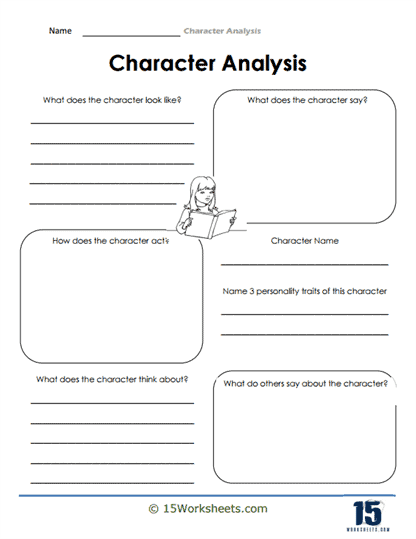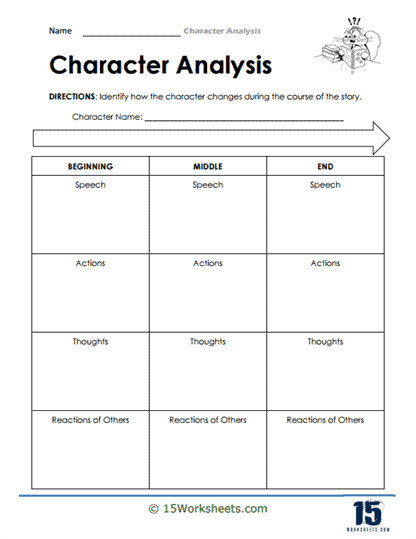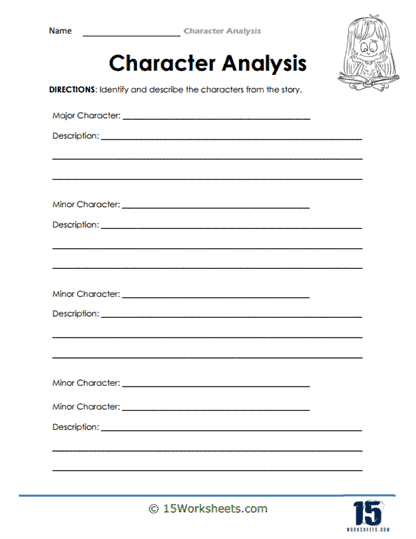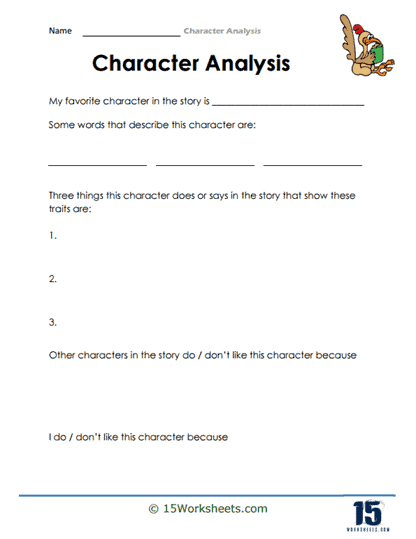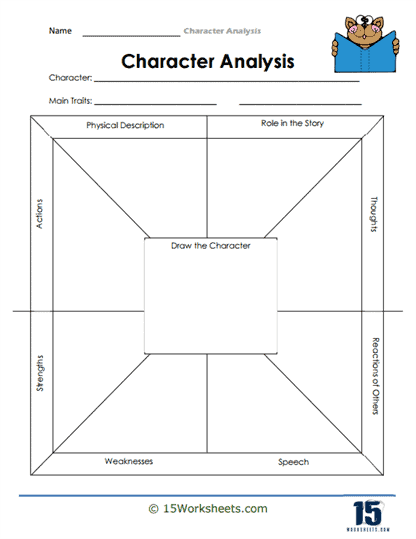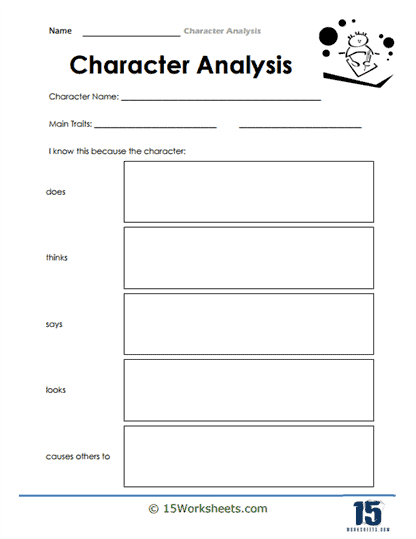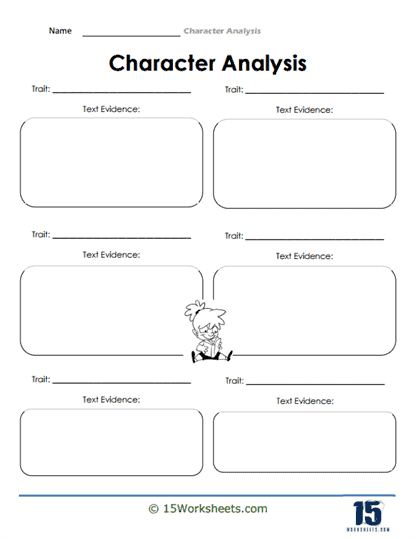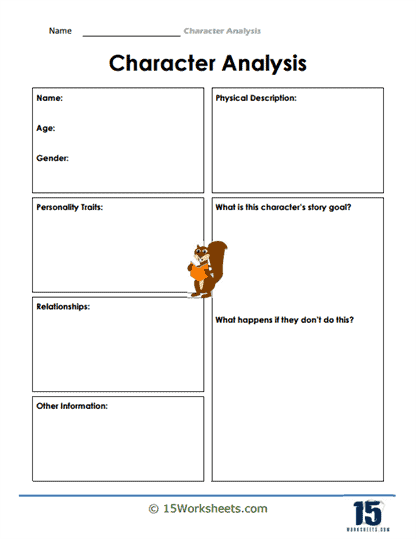Character Analysis Worksheets
All About These 15 Worksheets
Characters are the heart and soul of literature, the vessels through which stories come to life. The Character Analysis Worksheets Collection is a treasure trove for students, offering 15 meticulously crafted worksheets designed to unravel the intricacies of literary characters.
These worksheets invite students to embark on a journey of discovery, exploring the motivations, traits, and transformations of characters in a wide range of texts. In this description, we will delve into the significance of character analysis in literature and the multitude of benefits it offers to students.
What is Character Analysis?
There are stories filled with characters that are sometimes ambiguous characters that are hard to decipher. A character analysis is a technique that makes it easier for a reader, especially students, to understand the character separately from the story. This technique allows readers to distinguish the story and make a character more humane.
There are two ways in which an author presents a character: direct and indirect. The direct way is to introduce the character and give information in the context. In contrast, the indirect way is when a character reveals his traits and layers through his actions and thoughts in the story. The readers deduce this indirect information as the story progresses.
How to Analyze a Character in a Book
There are five ways to analyze a character, and using a graphic organizer can simplify your character analysis. We will analyze a character below in detail as an example.
1. The role of the character
Identify the role of the character you are about to analyze. Is it the main character or a minor? If a supporting character, then what is the relationship to the protagonists. Let us examine Harry Potter from the series Harry Potter. He is the protagonist of the books.
2. Physical aspects of a character
Write down the physical traits in the following box, such as height, age, shape, hair color, dressing style, eye color, etc. For example, Harry is a short, skinny boy with green eyes, black hair, a scar on his forehead, and a pair of glasses on his eyes. He turns eleven at the start of the story.
3. History of the character
Write about the background story of the character. It is told at the start sometimes or is gradually revealed over the course of the story. Such as, the background of Harry was that he was a wizard who survived Lord Voldemort’s attack but became an orphan that night. He lived in the worst conditions with his aunt and uncle until Hagrid came to take him.
4. Behavior and thoughts
The qualities of the character must be listed next. It tells us what type of character he is, like humble, jolly, serious, intelligent, clever, wise, brave, etc. For the given example, the qualities of Harry were brave, thoughtful, obedient, respectful, curious, and a fantastic quidditch player.
5. Transition till the end
This part includes the relationships built between the character and the other characters. It also includes the transition of a character from start to end. Harry, the boy who was timid, afraid, and closeted at the beginning of the book, became a courageous person, a talented wizard of his time.
Why Is Character Analysis Important?
One must understand why a character analysis is important. It enhances the critical thinking of a reader, and the analysis can help draw conclusions about a character. These characters are the backbone of the stories; to make complex characters with layers and shades of humanity, you must learn the art of describing one in detail. This is an additional technique that can enhance your writing ability as well.
Character analysis is essential in literature, drama, and film for several reasons, as it contributes to a deeper understanding and appreciation of the work. Here are some key reasons why character analysis is important:
Enhances comprehension: Analyzing characters allows readers or viewers to better understand their motivations, personalities, relationships, and actions, which in turn helps with interpreting the overall meaning and themes of the work.
Develops empathy and perspective: Examining characters’ thoughts, feelings, and experiences can foster empathy and help readers or viewers see the world from different perspectives, enhancing their ability to understand others in real life.
Encourages critical thinking: Character analysis requires critical thinking skills to evaluate and interpret characters’ actions, choices, and development throughout the work. This analytical process can translate to better decision-making and problem-solving skills in everyday life.
Strengthens engagement: Understanding and relating to characters can make a story more compelling and emotionally engaging, leading to a more satisfying and immersive experience.
As students engage with characters from diverse backgrounds and experiences, they develop the capacity to analyze character motivations, connect characters to broader themes, and engage in meaningful discussions about the human condition. These skills empower them to become not only well-read individuals but also more empathetic, reflective, and analytically skilled thinkers.
Empower your students to unveil the depth and complexity of literary characters with confidence, becoming astute readers who appreciate the power of storytelling to illuminate the human experience. Invest in their educational journey and their future with the Character Analysis Worksheets Collection. Unlock the doors to literary exploration, one character at a time, and watch as your students become more engaged, enlightened, and empathetic readers and thinkers.

